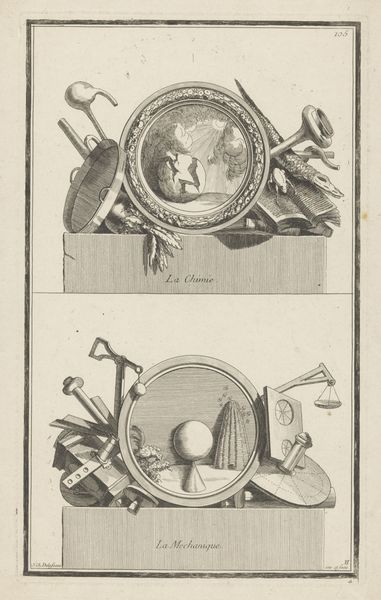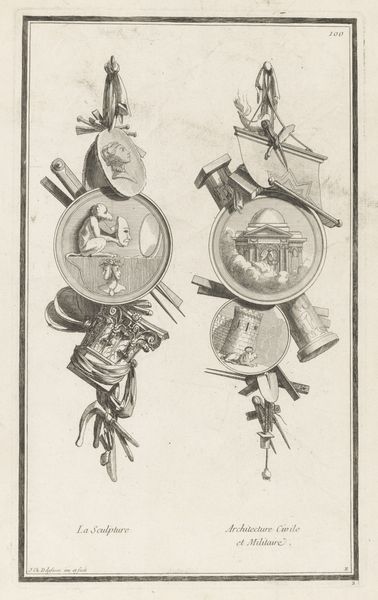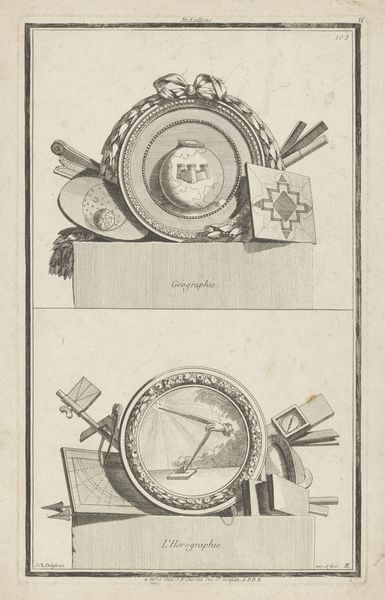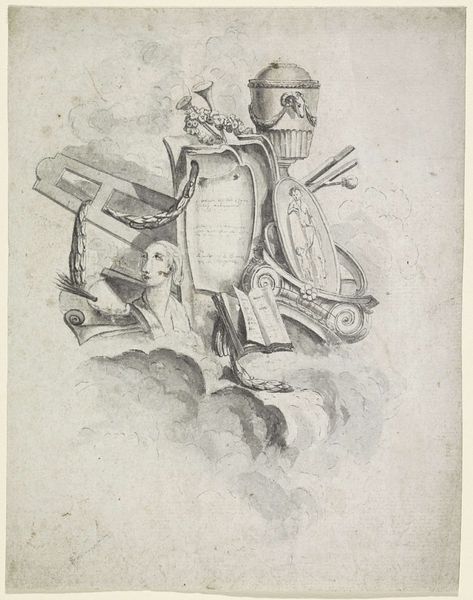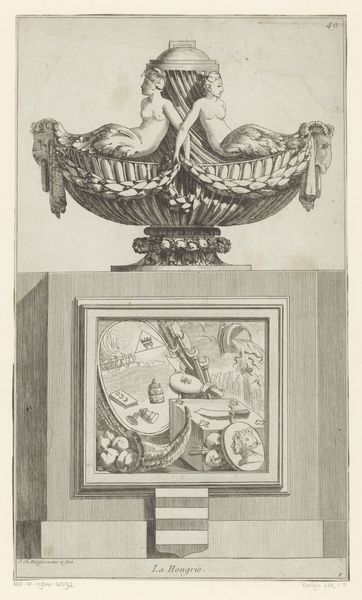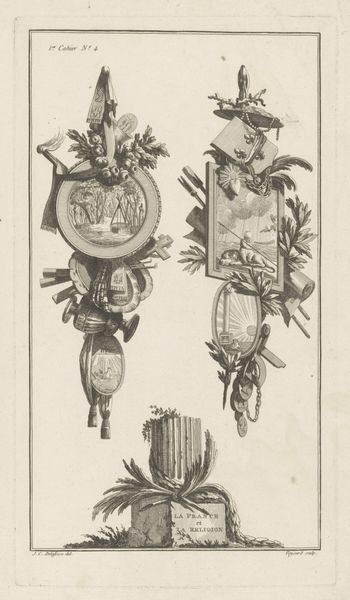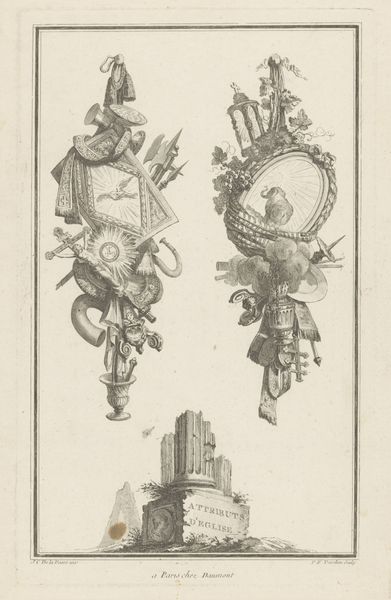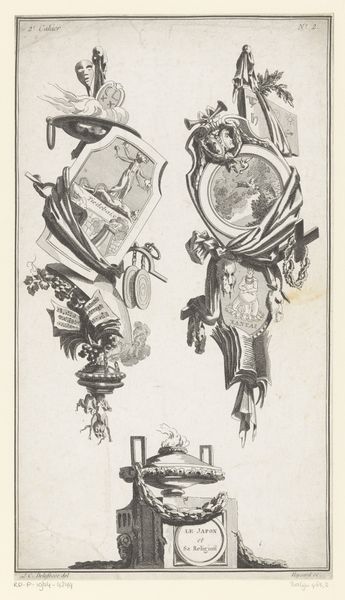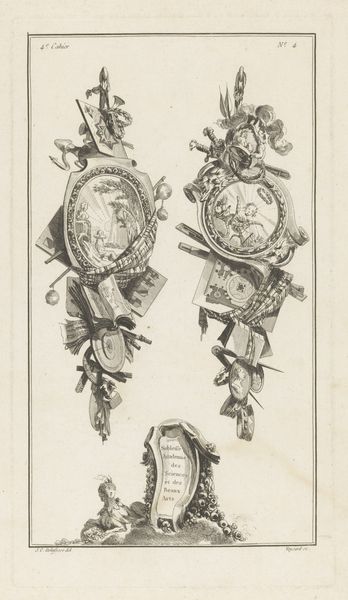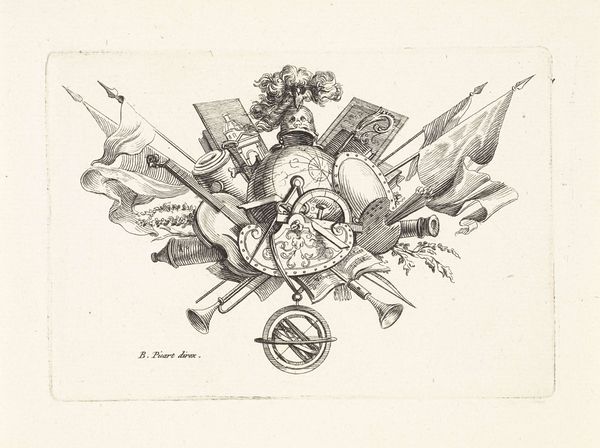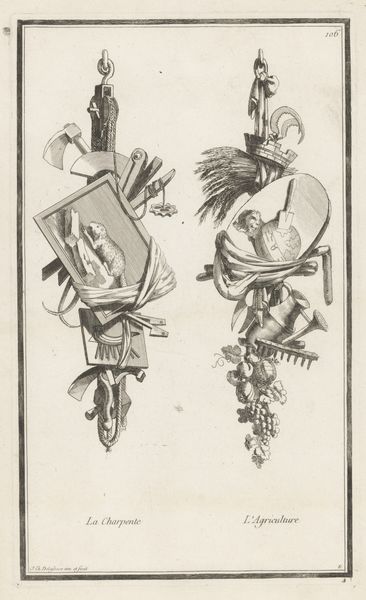
Dimensions: height 383 mm, width 236 mm
Copyright: Rijks Museum: Open Domain
Curator: Hmm, intriguing! I get this feeling of orderly chaos. All these objects meticulously arranged but... for what purpose, exactly? Editor: That’s Jean Charles Delafosse's "Hydrografie en Geometrie", dating back to between 1768 and 1771. We're fortunate to have it here at the Rijksmuseum. It’s an engraving, a print, showcasing… well, hydrography and geometry! Curator: Okay, right, very literal. But there's something about the detail that pulls you in. Look at the top section—it's almost like a heraldic shield celebrating water or sea travel. And then, below, a more… intellectual assortment. It is a bit like finding someone's old sketch book. Editor: Precisely. Delafosse was designing architectural ornaments, so he was likely influenced by Baroque sensibilities, which valued allegory. These aren't just random items; they're symbolic. Hydrography, of course, involves mapping bodies of water; hence the charts, flags and maritime objects. The compass, that little boat! And geometry represents reason, precision: the globe, the drafting tools. The lines almost dance despite their precision. Curator: It is kind of funny that the lines of this picture feel so intentional, maybe that comes from the fact the media is so static and hard to make art with, unlike modern painting. Are those... are those trumpets in the hydrography section? Seems a bit loud for mapping! Editor: Ha! Well, you’ve nailed a quirk of the era! Think of them as symbols of discovery, perhaps, or pronouncements of newfound knowledge. Public spectacle in the age of enlightenment. Curator: So, the art, even in representing 'scientific' disciplines, still wants to impress you with importance, even grandness. Interesting. Editor: Precisely! The print bridges this gap so nicely, showing us how scientific progress at the time was inherently tied to presentation, and even a bit of theatrical flourish. Curator: It is fascinating how such a relatively simple piece, crafted with lines and paper, can hold so many layers of thought and intention. Definitely gives you something to ponder. Editor: Agreed. Delafosse captured an important intersection here – where science met society, and where art immortalized that encounter. It gives us a glimpse of their view of a changing world, and where knowledge could take them.
Comments
No comments
Be the first to comment and join the conversation on the ultimate creative platform.
